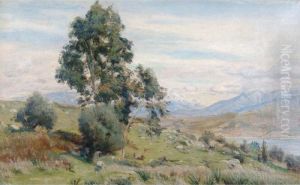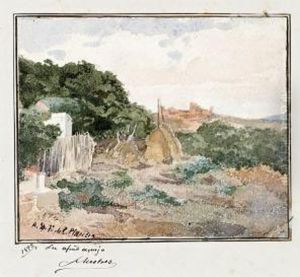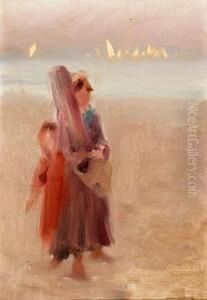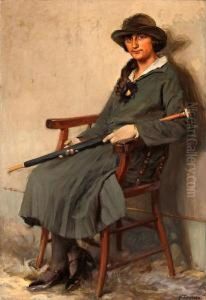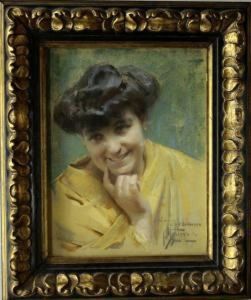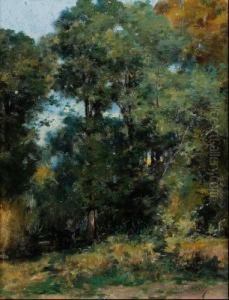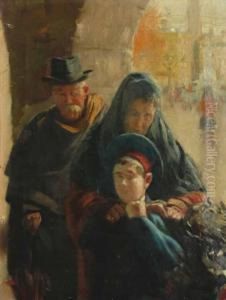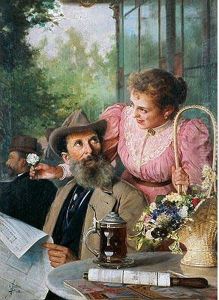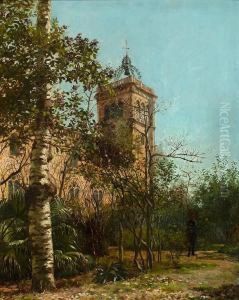Felix Mestres Borrell Paintings
Felix Mestres Borrell was a notable figure in the world of Catalan painting, whose work spans the transition from the 19th to the 20th century. Born in Barcelona, Spain, in 1864, Mestres Borrell emerged from a cultural backdrop rich with artistic innovation and political change. His early life was marked by the vibrant artistic scene of Barcelona, which was at the time a melting pot of Modernisme (the Catalan take on Art Nouveau) and more traditional approaches to art.
Mestres Borrell's work is characterized by its diversity, covering a range of subjects from landscapes and seascapes to portraits and historical themes. He was particularly adept at capturing the luminosity of the Mediterranean, with a palette that expertly balanced light and shadow to evoke the unique ambiance of the Catalan coast. His landscapes often depicted serene, idyllic scenes that belied the tumultuous period of change that Spain, and particularly Catalonia, was undergoing during his lifetime.
Throughout his career, Felix Mestres Borrell was deeply involved in the artistic community of Barcelona. He was a contemporary of many key figures in the Modernisme movement, though his own style remained distinct, often leaning towards a more classical realism that set him apart from the more avant-garde tendencies of his peers. Despite this, his work reflects a keen awareness of the artistic developments of his time, incorporating elements of Impressionism and Symbolism without fully subscribing to any single movement.
Mestres Borrell's contributions to the arts were not limited to his painting. He was also involved in the cultural life of Barcelona, participating in exhibitions and engaging in the intellectual debates of the day. His works were exhibited in various notable venues, both nationally and internationally, earning him recognition and awards that bolstered his reputation.
The Spanish Civil War (1936-1939) marked a turbulent end to Felix Mestres Borrell's life and career. The conflict brought about significant upheaval in Spain, impacting the country's cultural landscape profoundly. Mestres Borrell died in 1939, the year the war ended, leaving behind a legacy that has since been recognized for its contribution to the rich tapestry of Spanish and Catalan art. Today, his works are cherished for their historical value and their beauty, offering a window into the world of a Catalonia that was on the cusp of modernity yet deeply rooted in its traditional past.



